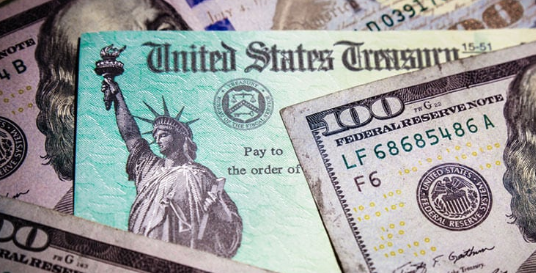The absence of reference to federal pay raises in the government spending bill is a clear sign that Congress agrees with the White House’s 4.6% recommendation.
The federal employee pay raise for 2023 has been expected to be 4.6% since the White House released its recommended budget in March. Although pockets of Congress have made pushes to get the pay increase slightly higher at 5.1%, both the proposed bill and letter to the President proved ineffective. Over the summer, both the House and Senate left any mention of a federal pay raise out of their budgetary measures, which effectively endorsed the 4.6% figure offered up by Biden.
It had been presumed that this 4.6% number was an average after taking locality pay under consideration, but this supposition was not confirmed until the President wrote the Alternative Pay Plan Letter at the end of August.
The letter outlined the president’s alternative pay plan stating:
Title 5, United States Code, authorizes me to implement alternative plans for pay adjustments for civilian Federal employees covered by the General Schedule and certain other pay systems if, because of “national emergency or serious economic conditions affecting the general welfare,” The price hikes that would otherwise go into effect don’t seem appropriate to me.
This means the “across-the-board” pay raise in 2023 will most likely be 4.1% with the average locality boost adding 0.5% on top of that. For some perspective, the raise that went into effect on January 1, 2022, was 2.2% “across-the-board” with a 2.7% average. The locality was known as the “Rest of US” saw a 2.42% actual increase while feds working the locality that includes Actual wage growth in Seattle, Washington, was 3.21%.
Below is the full text of the president’s memo to the House of Representatives:
Letter to the Speaker of the House of Representatives and the President of the Senate on the Alternative Plan for Pay Adjustments for Civilian Federal Employees
August 31, 2022
Dear Madam Speaker: (Dear Madam President:)
I am transmitting an alternative plan for pay adjustments for civilian Federal employees covered by the General Schedule and certain other pay systems in January 2023.
Title 5, United States Code, authorizes me to implement alternative plans for pay adjustments for civilian Federal employees covered by the General Schedule and certain other pay systems if, because of “national emergency or serious economic conditions affecting the general welfare,” I view the increases that would otherwise take effect as inappropriate.
Accordingly, I have determined that it is appropriate to exercise my authority to set alternative pay adjustments for 2023 pursuant to 5 U.S.C. 5303(b) and 5 U.S.C. 5304a.
Specifically, I have determined that for 2023, the across-the-board base pay increase will be 4.1 percent and locality pay increases will average 0.5 percent, resulting in an overall average increase of 4.6 percent for civilian Federal employees, consistent with the assumption in my 2023 Budget.
Federal agencies have witnessed growing recruitment and retention challenges with Federal positions experiencing eroded compensation. Multiple years of lower pay raises for Federal civilian employees than called for under regular law have resulted in a substantial pay gap for Federal employees compared to the private sector. The American people rely on Federal agencies being managed and staffed by skilled, talented, and engaged employees, including those possessing critical skills sets, which requires keeping Federal pay competitive. This alternative pay plan decision will allow the Federal Government to better compete in the labor market to attract and retain a well‑qualified Federal workforce.

Table of Contents
Historic Pay Raise
The biggest federal pay increase dating back to 1969 was 10.9% in 1972; this was the only time the federal civilian employee raise reached double digits. 1980 saw the second largest pay boost for feds at 9.1%. The last time the percentage reached the level of the upcoming 2023 percentage was in the year 2002 when it was also 4.6%. In both 2000 and 1981, it was 4.8%, and in the 19 years between, it never rose to that level.
The pay increase could still increase, though. – Well, technically. Under the FEPCA (Federal Employees Pay Comparability Act), OPM could use the calculation contained in the law from 1990 as opposed to the White House’s “alternative” but in the 32 years since this has been possible, such has never transpired. In this case, the calculation would probably result in a pay raise that was higher than the predicted 4.6%.
The aforementioned adjustment shall become effective on the first day of the first applicable pay period beginning on or after January 1, 2023.
Those Increases Aren’t Yet Keeping Up With Inflation
Due to a lack of available workers, employers are spending more on pay raises, but those increases aren’t yet keeping pace with inflation.
A recent report from business consulting firm WTW predicts that overall salary increases will be 4.6% in 2023, up from a mid-year estimate of 4.1% and higher than the 4.2% increase that employees received this year. The increase is greater than the 3.1% increase from 2018 to 2021.
Even though it’s impossible to forecast how quickly inflation will grow in the coming year, the current rate of increase has led to households losing purchasing power despite higher-than-average pay increases.
Based on the consumer price index, which tracks price changes for a range of consumer goods and services, the most recent reading of inflation showed an increase of 7.7% in October compared to the same month last year. Since January, that increase over a year has been the smallest.
The Fed aims for a 2% annual rate of inflation
A normal component of an economy is inflation, but the current rate is much higher than the Federal Reserve’s target rate of 2%.
A key interest rate has been increased by the Fed’s rate-setting committee six times so far this year in an effort to slow the rate of inflation. The general theory is that by raising the cost of borrowing money, spending will decrease and there will be less inflationary pressure due to lower consumer demand.
Also, job losses may result from this. The unemployment rate is still only 3.7%, according to the most recent reading, despite the rise in layoffs.
Susan Collins, president of the Boston Federal Reserve, expressed assurance on Friday that inflation can be controlled without a significant increase in unemployment.
“I remain optimistic that there is a pathway to re-establishing labor market balance with only a modest rise in the unemployment rate — while remaining realistic about the risks of a larger downturn,” In prepared remarks for a Boston Fed economic conference, Collins said.
Even though the labor market may change in a few months, the current labor shortage presents a challenge for businesses: according to 75% of WTW survey respondents, they have trouble luring and keeping talent, which is why they have higher salary budgets. Additionally, employers are putting a greater emphasis on diversity, equity, and inclusion (61%), and they are allowing for more workplace flexibility (67%) as well.
“As inflation continues to rise and the threat of an economic downturn looms, companies are using a range of measures to support their staff during this time,” said WTW research director Hatti Johansson.
Based on a survey completed in October, the WTW report. 3 to 1 550 Americans responded as of November 4. organizations.





